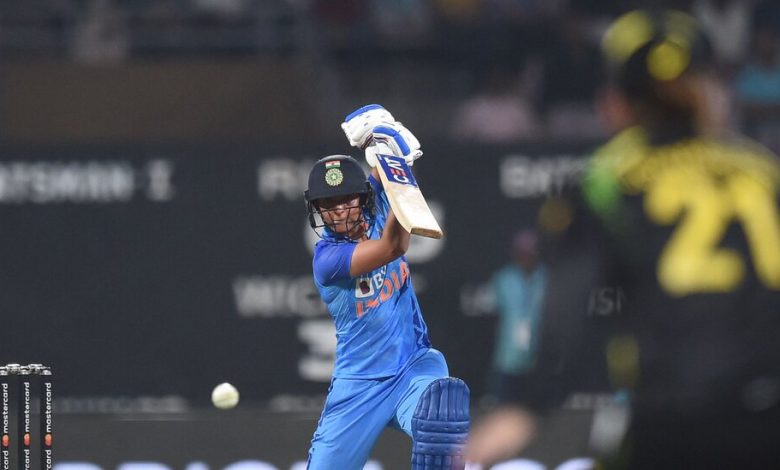Women’s Cricket League in India Sells Five Teams for $570 Million

Even for a country familiar with jaw-dropping valuations for cricket teams, the numbers remarkable: At a hotel in Mumbai on Wednesday, an auction for five teams in a new Indian women’s cricket league produced one of the biggest one-day financial injections in the history of women’s sports.
The Board of Control for Cricket in India, the governing body of the sport’s powerhouse nation, announced that the five new teams, which will comprise the nascent Women’s Premier League when it takes place in March, were sold to local investors for a combined price of more than $570 million.
The size of the deals was the biggest headline: The average price of the teams ($114 million) dwarfed valuations in more established American leagues like the W.N.B.A., based on recent sales, and signaled the lucrative potential of the women’s game in the world’s richest cricket market. It also made the Women’s Premier League the latest test case for women’s competitions attempting to attract audiences and sponsors, and drive profits, comparable with the most lucrative men’s tournaments.
Top women’s cricketers could be the first to benefit: They can most likely expect salaries to reach new highs when the teams stock their rosters at an auction next month.
“It is going to have a huge impact on the women’s game in India and in the rest of the world,” said Mustafa Ghouse, an executive from JSW, an Indian energy company that was one of the successful bidders.
In the creation of the Women’s Premier League, the B.C.C.I. has followed the same playbook it used 15 years ago, when it sold eight franchises for a men’s competition, the Indian Premier League, to private investors.
The I.P.L.’s popularity has since revolutionized how cricket is played and watched by popularizing the television-friendly, three-hour Twenty20 format of the game. It also has attracted nine-figure investments from a diverse group that includes Indian billionaires, overseas private equity groups and global media giants.
The most recent I.P.L. expansion franchises sold for more than $700 million apiece, and the new media rights deal made the I.P.L. the second most expensive league in the world, behind the National Football League, on a per-game basis.
The BCCI has designed the Women’s Premier League to be a sister version of the I.P.L. Of the five franchises, three went to existing owners of I.P.L. teams. Reliance Industries, the owners of the Mumbai Indians, spent $112 million to add the Mumbai women’s side to its portfolio. Diageo, which runs the Royal Challengers I.P.L. franchise, handed over a similar amount for the Bangalore team. A joint venture between JSW and another company, GMR, which together control the Delhi franchise in the I.P.L., successfully bid $99 million for the new women’s side that will be based in the capital.
The other two franchises were won by new entrants to Indian cricket: The Adani Group, a conglomerate owned by one of Asia’s richest men, made the largest bid — $158 million — for the team based in Ahmedabad, while Capri Global, a financial lender, bought the Lucknow team for $92 million. Both companies had previously been outbid in attempts to buy I.P.L. expansion teams.
To drive up the value of the franchise sales, the B.C.C.I. first announced the sale of media rights to the Women’s Premier League earlier this month: At a closed-bid auction, it sold five years of domestic television and digital rights to the tournament to Viacom18 for $116 million. According to Jack Genovese of Ampere Analytics, a media research firm, this made the W.P.L. — a monthlong championship that has yet to play a game — the second-most valuable women’s sports league in the world, behind only the 12-team W.N.B.A.
In addition to the sheer size of the Indian market, Genovese said, “having franchises that operate in both the men’s and women’s leagues helps to build on existing narratives and creates a sense of familiarity for the W.P.L.”
Some of the money raised from the media rights sale will be invested back into the game through player salaries, which will help to ensure the participation of the world’s best players. Although salary figures have yet to be confirmed by the B.C.C.I., base prices for players at the auction — a high-stakes marketplace in which teams bid for individual players one at a time — are likely to range from $12,000 to $60,000 for the four-week competition. The most in-demand players, such as the Indian internationals Harmanpreet Kaur and Shafali Verma, and leading overseas stars from England and Australia, are expected to earn several times more than the base salaries.
Some critics have raised concerns that the money that will pour into women’s cricket through the W.P.L. will be funneled disproportionately to a handful of people at the top of the sport. “It would be better to organize a tournament which explicitly seeks to redistribute wealth in women’s cricket,” said Raf Nicholson, a historian of women’s cricket at Bournemouth University in England. “But unfortunately we seem to be following the path set out by the men, which just makes the rich richer.”
Others argued that any additional funding at all should be welcomed, especially in a sport where only a couple of hundred players around the world can afford to play professionally.
“In many countries, including established places like South Africa, the national board cannot afford to retain their best players,” said Daniel Norcross, who has worked on BBC broadcasts of women’s cricket for years. “The franchise leagues that are springing up around the world are providing a more adequate living. That helps more than just the country that is running the league. To have India coming in makes a massive difference. Suddenly, the sport becomes a viable career.”
Several leading international players, such as Lizelle Lee of South Africa, have retired from playing internationals in favor of appearing in short-form tournaments like the Hundred in England and the Women’s Big Bash League in Australia. Now, the top wages on offer at the W.P.L. will be substantially larger than even those events.
In an attempt to ensure the continued viability of the new Indian women’s league, the winning owners were given 10 years to pay their initial franchise fees to the B.C.C.I., while the governing body agree to hand over 80 percent of the revenue from the first five-year media rights deal to the teams. As in the I.P.L., teams will retain the majority of their local revenue, earned through sponsorship and sales of tickets and merchandise. A similar revenue-sharing model was one of the reasons every I.P.L. team managed to remain profitable through the Covid-19 pandemic.
The challenge for the B.C.C.I. and Viacom18 is to ensure that the women’s tournament commands attention, but both they and the team owners believe there is an appetite for watching women’s cricket: More than 47,000 people watched the Indian team play Australia in Mumbai in December, for example, setting a national record. And a cultural historian, Boria Majumdar, noted crowds climbed walls to watch women’s exhibition matches held before I.P.L. games in previous years. He described the sale of the W.P.L. teams as “a revolution” for the game.
The five-team competition may just be the beginning. The B.C.C.I. has indicated it is planning to add more teams after at least nine entities who submitted bids missed out on the first five franchises. Norcross suggested the B.C.C.I. chose to keep the initial W.P.L. to five teams because it was worried about the depth of talent. But he also said, “any concerns will pass quite quickly when the spectacle happens.
“When there are up to five overseas players and several Indian internationals in each side,” he said, “there will be more than enough talent to create really high-quality games. And that will drive the expansion.”





